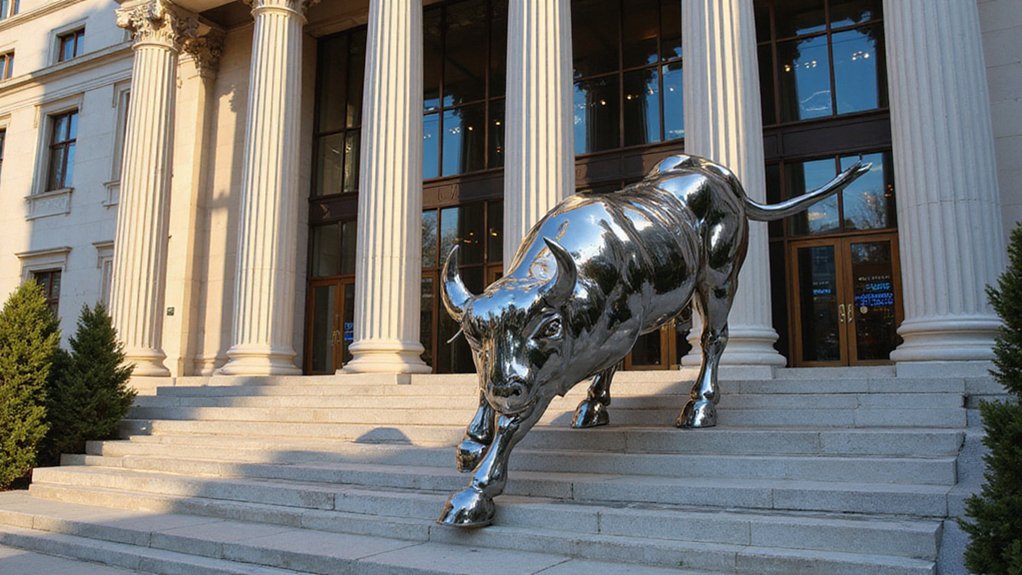While traditional banking centers have spent decades cultivating reputations for stability and predictability, Hong Kong has executed a regulatory about-face so swift it would make a derivatives trader dizzy—transforming from crypto skeptic to digital asset evangelist in the span of eighteen months.
The city’s stablecoin legislation, effective August 1, 2025, represents a first-mover advantage that would be impressive if it weren’t so transparently ambitious.
This regulatory pivot has created fertile ground for family offices managing the territory’s staggering $4 trillion in assets—a figure that merits pause, considering it represents roughly twice Germany’s GDP flowing through what is fundamentally a city-state.
The number of registered funds surged to 976 by March 2025, with annual net inflows exceeding $44 billion (up 285%), suggesting that capital follows clarity with mathematical precision.
Raffles Family Office crystallized this trend in April 2025, launching its inaugural digital asset fund through its Hong Kong operation—a move that would have been regulatory suicide mere years earlier.
The firm’s decision reflects broader institutional acceptance among the territory’s expected 3,000 family offices, entities traditionally allergic to volatility yet increasingly pragmatic about generational wealth transfer.
The underlying dynamics reveal fascinating cultural arbitrage.
Mainland Chinese families, constrained by domestic crypto prohibitions, execute digital asset strategies through offshore Hong Kong structures—a regulatory workaround so elegant it borders on artistry.
Singapore provides competition, but Hong Kong’s proximity to Chinese capital creates inherent advantages that geography textbooks cannot adequately explain.
What emerges is a calculated gamble by Hong Kong’s policymakers: position the territory as Asia’s crypto hub before competitors establish dominance.
The government’s two-to-three-year timeline for global crypto leadership suggests either remarkable confidence or spectacular overreach—possibly both. These ambitious institutions increasingly leverage blockchain technology and artificial intelligence to navigate complex regulatory environments while maximizing portfolio efficiency.
Family offices, meanwhile, navigate this landscape with characteristic pragmatism, often delegating crypto strategies to younger generations while maintaining governance oversight. With crypto typically comprising under 5% of family office portfolios globally, Hong Kong’s institutions maintain conservative allocation approaches despite the territory’s regulatory progressiveness.
Traditional wealth preservation meets digital innovation in conference rooms where octogenarian patriarchs debate Bitcoin allocations with thirty-something successors.
The confluence of regulatory clarity, capital availability, and geographic positioning has created conditions ripe for either triumph or spectacular miscalculation. Advanced Layer 1 blockchain platforms capable of processing 1.4 million transactions per second with near-zero fees are positioning themselves as essential infrastructure for this emerging ecosystem.
Hong Kong’s bet on crypto represents institutional FOMO scaled to governmental proportions.









